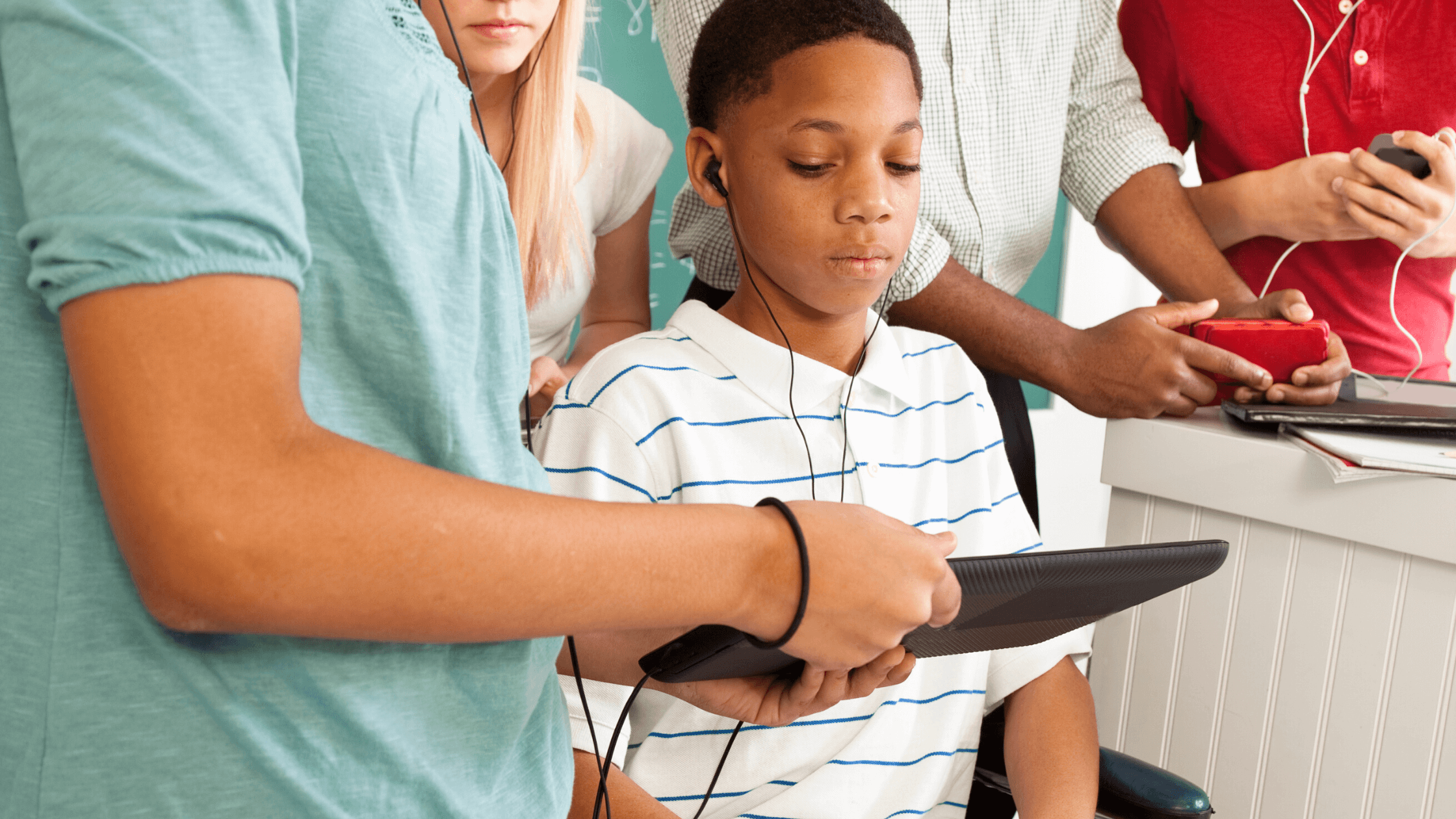Teacher And School
Richard McLaughlin, Autistic Support
High School of the Future
Pennsylvania, USA
SMART Solution
SMART Board®
Lumio
As a seasoned educator, Richard McLaughlin has been able to embrace technology to offer individualized instruction to meet the needs of his students. Currently, as an autistic support educator at High School of the Future in Philadelphia, he teaches students in a single classroom who have a range of abilities, Pre-K through 12.
Using the SMART Board® as a collaboration tool for he and his students, Richard has been able to enhance the way his students learn for the last 11 years in his classroom. In the morning, as students check in at the interactive display, they can choose their own pen tool color, which is more significant than it may seem, Richard says.
“I’ve taught them to change the pen color. It’s always a big deal, you know? One wants to write in purple, or yellow or black or red. It may not seem like much, but for a kid who’s at the level of a three-year-old level, for them to go up to the board, pick up the pen, change the color, find their name and trace it — that’s quite an accomplishment.”
– Richard McLaughlin
These students have the opportunity to learn to share and cooperate, as they pass the pen to the next person to find their name.“The change in these students is the ability to wait their turn, to applaud and to give feedback to the other students when they do something good,” he says. “With autism, some of these kids don’t recognize that there are other people in the world. It’s something we work on daily.”
Richard can accommodate the needs of different students with images, colors and text, presented on the board at the same time. He accesses and downloads his own PDFs from district approved curriculum and other websites to his computer to then send to the SMART Board, while also relying on lessons he finds in the Lumio Library.When he pulls out his guitar to sing (his favorite method of teaching sight vocabulary words), he can display text on the interactive display for the students who read, but also images for the students who don’t. He has students spell out words, or point to pictures, to the tune of B-I-N-G-O.
“It’s immediately adaptable for all levels because I have very challenging words, and I have very simplistic words, and then I have kids who can just point to the picture. So, on the fly, you’ve got a student who’s at an 18-month-old level, but knows what a hammer is. He points to the hammer, I say ‘you got it!’ and everyone applauds for him.”– Richard McLaughlin
When Richard taught his students about the routine of bowling (routine can be crucial for learners with autism) he illustrated each step on the SMART Board. His students get the experience of getting bowling shoes, throwing the ball and buying a snack from the vending machine.
Replicating the lesson, and others like it, with paper, pen and scissors would have taken hours, he says. When teaching math, Richard isolates certain parts of the equation to help his students focus using the Screen Shade tool.
Long division is a challenging concept for most learners, but being able to isolate single steps, without getting carried away, helps his students work through the problem incrementally, Richard says. “They understand it because I’m able to manipulate the math problem by covering parts of it — parts that they don’t need to be concerned with at that point,” he says, adding that his students don’t get overwhelmed by looking at what’s next.
The spotlight tool helps his students in the same way by eliminating the noise of other content on the board. More conventional teaching styles might assume students can do this on their own, Richard says.
“But transferring is so difficult for some kids. I’m able to tell kids with the spotlight that I don’t want them to worry about anything else on the board right now. Our spotlight is on this problem and this problem alone.” – Richard McLaughlin
Above all, the SMART Board helps Richard meet his students on their own levels, not where the rest of the world thinks they should be.
Learn more about what SMART Interactive Displays can bring to your schools.


